JB & Susan Harlin
www.jbhphoto.com
MORE CROPPING
I had made an earlier post on the merits of cropping your image and the subject has come up again. I will stick to my original thoughts on the process of cropping. Use it if necessary!
 I ran onto an article by David Vestal published in an old Photo Techniques magazine from 2002 that seems to sum things up very well.
I ran onto an article by David Vestal published in an old Photo Techniques magazine from 2002 that seems to sum things up very well.
“Some people say that we should never crop photos. They’re wrong. When cropping will help the picture, it’s better to crop it than to leave it uncropped. If it doesn’t help the picture, then why bother? But it is an option, and it’s not a moral issue. We don’t need anyone’s permission. If you do it, do it well.” *
I couldn’t have said it better. . . thank you Mr. Vestal!
JB
 I ran onto an article by David Vestal published in an old Photo Techniques magazine from 2002 that seems to sum things up very well.
I ran onto an article by David Vestal published in an old Photo Techniques magazine from 2002 that seems to sum things up very well.* David Vestal, Advanced B&W Printing, Photo Techniques Magazine, 2002
WHY THE WET DARKROOM???
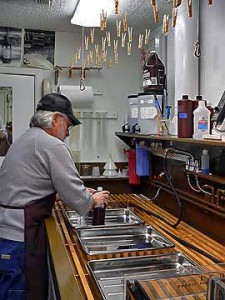 NOTE: I wrote this little rant over a year ago and never published it. Guess it got lost among all the other posts and I have just resurrected it today. I know I am repeating some things here, but I do so only to make my point. My views have not changed.
NOTE: I wrote this little rant over a year ago and never published it. Guess it got lost among all the other posts and I have just resurrected it today. I know I am repeating some things here, but I do so only to make my point. My views have not changed.
I am forever asked, why the wet darkroom? Why would you want to work with film and photographic paper when you can just click the mouse and let the magic box (computer) create a visual paradise? I am perpetually searching for the answer. . . an answer that makes sense to me, and at the same time explains why to those that ask. I have to begin by saying that nothing is ever as it is advertised. Those that have something to sell always tout how easy it is when you buy their products. If you are looking for quick and easy, then photography may not be for you, matters not what the hype says. In all of those slick commercials and magazine ads things just fall into place without any effort. Everyone has a big smile on their face and all is well. Can this be reality?
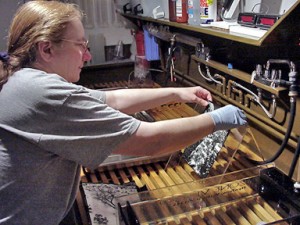
A lot of what we see today is a continuation of the biggest lie ever told about photography back in the early days of the medium. George Eastman, founder of Eastman Kodak Company, came up with a catchy slogan when he introduced the Kodak camera in 1888. His little box camera was the first camera intended for the general public and his slogan was simply, “You Press The Button, We Do The Rest.” This catch line implies that the person making the photograph need do nothing but be there, of course with a Kodak camera, and that person need know nothing, nor do anything, other than press the button and send money to Kodak. This slogan was a work of sheer genius. It made photography easily accessible to the general public and made ‘ol George very wealthy. There is absolutely nothing wrong with any of this, except for that little phrase, which implies that the operator hardly even be present. Anyone that has used a camera knows for themselves that there is more to it than just pressing that little button.
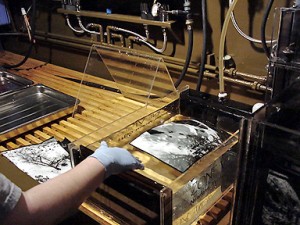 Now I can mention the next biggest lie ever told about photography, this one somewhere in the early 21st century. I am not sure exactly where this came from, but I venture to say it came from large corporate marketing gurus, better known as Harvard MBA’s. When you have large companies run by people that know nothing about the products they produce, you have idiots at the helm. They worship at the altar of the share holders and the quarterly report. Enough said! The next big lie in photography is, “Film Is Dead.” I still believe this was nothing but a marketing ploy to guide the easily persuaded customer to purchase more equipment and new technology. This time based on the layman’s misunderstanding that the computer can do anything with only the click of the mouse. You need do nothing, but supply the money. The old slogan could have been upgraded to read, “You Press The Button, The Computer Does The Rest.” I believe that by now, anyone that has tried this knows, again from hard experience, that it just isn’t that easy. No matter what the hype from any manufacturer, there is no quick and easy way to photographic success.
Now I can mention the next biggest lie ever told about photography, this one somewhere in the early 21st century. I am not sure exactly where this came from, but I venture to say it came from large corporate marketing gurus, better known as Harvard MBA’s. When you have large companies run by people that know nothing about the products they produce, you have idiots at the helm. They worship at the altar of the share holders and the quarterly report. Enough said! The next big lie in photography is, “Film Is Dead.” I still believe this was nothing but a marketing ploy to guide the easily persuaded customer to purchase more equipment and new technology. This time based on the layman’s misunderstanding that the computer can do anything with only the click of the mouse. You need do nothing, but supply the money. The old slogan could have been upgraded to read, “You Press The Button, The Computer Does The Rest.” I believe that by now, anyone that has tried this knows, again from hard experience, that it just isn’t that easy. No matter what the hype from any manufacturer, there is no quick and easy way to photographic success.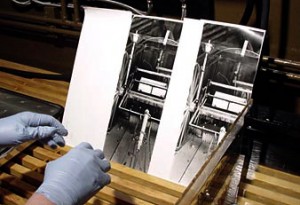
Having said all of this, I feel that the art of photography is something that requires dedication and perseverance. You have to choose your tools carefully and make sure you have the correct tools for your creativity. I have my own opinions as to the validity of what I do and why I do it in a way that suits me. For what I am about to say I have been belittled, scorned, laughed at, and cursed. Makes no difference to me. Anyone small-minded enough not to accept and respect my choices make no difference in the grand scheme anyway. My father used to say that people that use curse words have a narrow vocabulary and an even narrower mind. So my favorite description as to the validity, use, and purpose of digital imaging. . . there I said that word, Digital. . . is to simply say, “It Is Only Another Art Form.” Simple as that! Choosing the wrong medium will turn into nothing but a waste of your time.
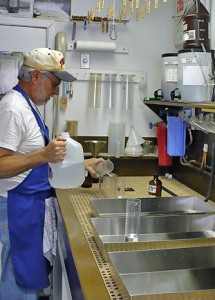 Digital imaging is not a replacement for anything. It is its own entity, has its own strengths and weaknesses. If you choose to work in the Digital arts, good for you! If you are a hybrid photographer, shooting film, scanning and printing digitally, then great for you! If is suits you and you are happy with what you create, then that is just fine with me. If whatever you create suits you, no matter what the medium, then you are on the right path. But, whatever you do, Do Not belittle me for not buying into the farce that Digital is a replacement for Film! And please do not propagate this lie to others that are new to photography. You are doing them a great disservice by funneling them into believing there is only one path. Nothing is more degrading and discouraging than to find out, much later, that you could have done something else that was much more to your liking. People need choices, and need to be able to see all of the different options that are available in the world of photography. One size does not fill all.
Digital imaging is not a replacement for anything. It is its own entity, has its own strengths and weaknesses. If you choose to work in the Digital arts, good for you! If you are a hybrid photographer, shooting film, scanning and printing digitally, then great for you! If is suits you and you are happy with what you create, then that is just fine with me. If whatever you create suits you, no matter what the medium, then you are on the right path. But, whatever you do, Do Not belittle me for not buying into the farce that Digital is a replacement for Film! And please do not propagate this lie to others that are new to photography. You are doing them a great disservice by funneling them into believing there is only one path. Nothing is more degrading and discouraging than to find out, much later, that you could have done something else that was much more to your liking. People need choices, and need to be able to see all of the different options that are available in the world of photography. One size does not fill all.
I realized I still have not answered the question, why the wet darkroom? All I can honestly say is, this is my choice. This is what I choose to do with my life. I can also say without reservation, that for me, a computer screen, keyboard and mouse comprise a place to work. This is where I go to get things done, find information, communicate, write (like this little rant) and to get my days work accomplished. This is not a place for me to create art. There is nothing artistic for me in front of a digital display. I do not feel anything artistic sitting at my desk, and creating art does not happen if I am not in that mood. I see the computer as a place for 100% left brain activities. When I go into the darkroom and close the door, I am immediately in right brain mode. This is where I create. Same as when I duck under the darkcloth behind that view camera. That little LCD screen on my snapshot camera is just for record keeping. There is nothing artistic there for me either. This is how I think. This is how I work. And this is the best I can do to describe why. If you find digital motivating and productive, then by all means use it to your best advantage. I find nothing about it in any way creatively stimulating for me. That is my choice. Do not belittle me if you do not agree. Creativity is fragile and is only where you find it. Use it wisely!
One more thought. I am not on a crusade to convert the world to film. I am only on a quest to try and show everyone that there are choices. . . that the wet darkroom is still alive. If you are interested, you can still choose the medium that best suits you. Matters not whether it is the mouse or the photo tray. What is really important is that everyone knows there is a choice and they should be aware of the strengths and weaknesses of each. To be boxed into that one size fits all world is not good for anyone. Hopefully by now you understand why I choose to work in the wet darkroom.
And, one more final thought. Just in case you believe the hype that film is gone forever, take a look at my earlier post titled, “FILM IS NOT DEAD.” You can special order both B&W and Color film in any size imaginable! No matter what photographic medium you use, the next time someone asks you about photography, do not propagate the lie that film is dead.
JB
GRAPEVINE CAMERA SHOW
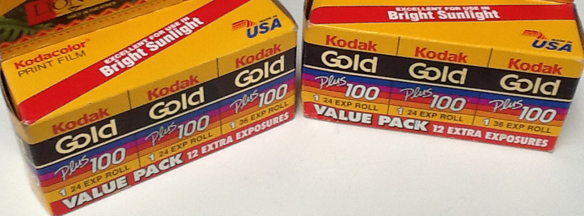 We had a fun time today at the Grapevine Camera Show. Actually found several things that we didn’t already have laying around. Funny how many things are FREE. . . especially when related to film and darkroom. A full bottle of selenium toner, and a near full bottle of Photo-Flo, and six rolls of very old 35mm film for David’s darkroom workshop.
We had a fun time today at the Grapevine Camera Show. Actually found several things that we didn’t already have laying around. Funny how many things are FREE. . . especially when related to film and darkroom. A full bottle of selenium toner, and a near full bottle of Photo-Flo, and six rolls of very old 35mm film for David’s darkroom workshop.
You never know what you are going to find. There have been times we have walked out without a thing to carry home, but not today!
WHEN WILL YOU GIVE UP FILM PHOTOGRAPHY?
 This is an interesting question that comes up all the time and seems to keep reoccurring. When will you give up film photography and move to digital, is something that is asked of me from time to time? My answer has been consistent since digital photography moved into the mainstream. Personally, my answer is, “I will give up photography completely if I have to go digital.” Plain and simple. . . I will never be able to create serious art with a computer.
This is an interesting question that comes up all the time and seems to keep reoccurring. When will you give up film photography and move to digital, is something that is asked of me from time to time? My answer has been consistent since digital photography moved into the mainstream. Personally, my answer is, “I will give up photography completely if I have to go digital.” Plain and simple. . . I will never be able to create serious art with a computer.
My entire life has been spent in and around the electronics world. I began using a computer when the first Commodore Vic 20 hit the market. I had to learn computing in order to stay current in the engineering world. I see a computer as an engineering tool. It is not a toy, not a game machine, not a source of entertainment. It is a tool for designing complex machines and circuits. . . for navigating to the moon, and the stars. One thing is certain for me, it is not a device for creating my art.
I use a computer for work; I use it to write; I use it to access the Internet; I use it to communicate with others; I use it to update my BLOG; and I use it to host a web site. These to me are not artistic endeavors.
In my mind, a computer is not where I go to express myself visually. It is not where I go to create my art. In front of a monitor I am in a working mindset, mostly thinking in left brain mode. Creativity requires a catalyst. Only out in the field with my camera under the dark cloth, or in the darkroom does my mind really shift into right brain ‘creative’ mode. It is impossible for me to think in an artistic manner when clicking a mouse and looking at a monitor.
I know I have written about this before, but the same question keeps coming up, and my feeling about the subject does not change. This is how I work and how I think. The creation of art is a very personal thing and requires you think in a particular way. For me, I can only create when I am in the proper environment, and cyberspace is not the proper environment for me.
So, if that day comes when there is no other alternative than to twiddle bits, and if I am still around, I will have to give up my passion for photography. I will just have to find contentment and enjoy the art that I have created, and know that there will never be anything like it again. I have spent a lifetime refining my technique. Take a close look at my prints and maybe you will see a glimmer of what I have spent so much time fine tuning to suit only me. I feel very fortunate to have lived in a time where I could participate in such a beautiful medium. Personally, I have no interest in learning anything new. There will never be a replacement for traditional photography!
JB
THROUGH THE LENS OF THE VIEW CAMERA
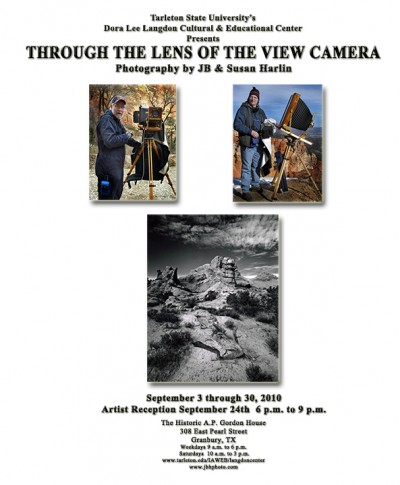 “THROUGH THE LENS OF THE VIEW CAMERA” is an essay originally published in the 2010-2011 “LANGDON REVIEW OF THE ARTS IN TEXAS” published by Tarleton State University’s Dora Lee Langdon Cultural and Educational Center in Granbury, Texas. This was in conjunction with an exhibition of our photography by the same title in 2010.
“THROUGH THE LENS OF THE VIEW CAMERA” is an essay originally published in the 2010-2011 “LANGDON REVIEW OF THE ARTS IN TEXAS” published by Tarleton State University’s Dora Lee Langdon Cultural and Educational Center in Granbury, Texas. This was in conjunction with an exhibition of our photography by the same title in 2010.
A PDF version of the essay is available for download in the ARTICLES area of our web site. Scroll to the bottom of the page and click on the link there, or go directly to the PDF HERE.
JB
SELENIUM TONING
 Everyone has their personal way of doing most anything. I have sorted through what works for me and it may not be the only way to do things, but it is the way I have refined and standardized my working habits. (I hate the term ‘workflow’ sounds way too digital for me.) What I have tried to do is explain how I work in the darkroom. You can use my methods as a starting point and determine what works best for you.
Everyone has their personal way of doing most anything. I have sorted through what works for me and it may not be the only way to do things, but it is the way I have refined and standardized my working habits. (I hate the term ‘workflow’ sounds way too digital for me.) What I have tried to do is explain how I work in the darkroom. You can use my methods as a starting point and determine what works best for you.
Selenium toning of finished prints is a given for what we do. Every print is toned in selenium, for permanence, a slight shift in print color, and to enhance tonal range. We have used numerous dilutions of toner and what works for one paper and developer combination, may not work for another. When it comes to the dilution and time, you have to experiment.
Here is how we selenium tone prints. Not sure exactly where all of this came from. Some from Ansel Adams, others from Fred Picker. Never the less, here is our standard procedure.
Prints are developed, stopped in acid stop, then fixed in an acid sodium thiosulfate fixer for four (4:00) minutes. The finished prints are rinsed in running water for five (5:00) minutes or so, then transferred to an archival washer. The washer is used as a holding bath during a printing session that may last all day.
Once printing is finished, each print is evaluated and may receive further processing by some selective bleaching. After bleaching, the prints are washed again in running water and again end up in the archival washer for storage.
At this point it is time to start toning. We use three trays when selenium toning. The first contains plain hypo (Hypo), the second selenium toner at some predetermined dilution (Toner), and the third tray is hypo clearing agent (HCA).
Prints are removed two at a time and placed, back to back, in the Hypo tray for about four (4:00) minutes. This is your second fix. The Hypo is an alkaline fix and is necessary to prevent stains, since any acid in the toning solution will result in undesirable stain. If you use an acid first fix as we do, be sure to wash well before placing into the Hypo. You do not want to carry any acid into the alkaline Hypo.
After the plain Hypo, prints are drained and transferred to the Toner tray. Start the timer. . . Toning times vary. We adjust the Toner dilution to yield a Toning time between two (2:00) to about four (4:00) minutes. The Toner tray requires continuous agitation by tipping front to back and side to side. As soon as the prints are in the Toner tray, two more prints from the washer are added to the Hypo tray. The prints in the Hypo tray are used as a reference to judge the amount of change that is happening in the Toner tray.
When the prints in the Toner tray have reached the desired tone, they are drained and moved to the HCA tray. The prints in the Hypo are moved to the Toner and two new prints are added to the Hypo. When the HCA tray gets its second set of prints, the set that has been in the longest are rinsed in running water, then moved back to the washer.
This is a daisy chain process that continues until all of the prints have been process and are back in the washer. The idea is to fix the prints for about four (4:00) minutes in the Hypo. . . Tone for two to four (2:00-4:00) minutes. . . then about four (4:00) minutes in the HCA. These times may vary, and is not that critical. You need to second fix, in Hypo, for no less than three (3:00) minutes and HCA for the same amount of time.
Once all of the prints are back in the washer, wash as usual. For us, our tested time is about one hour. Be sure to test your washer for optimum wash time. You will find the mixtures we use posted in the FORMULAS page here on this BLOG.
This is a whole lot more complicated to explain than to actually do. It is a rhythm you pick up as you work through the prints and is really quick and easy. One word of caution; once you begin to selenium tone your prints, you will never be satisfied if you don’t.
JB
A LITTLE SELECTIVE BLEACHING
Selective bleaching is a technique that uses a very dilute solution of Potassium Ferricyanide, which is brushed on specific areas of a print to lighten the tone and increase contrast. It must be done very judiciously and anyone practicing this technique must be prepared to ruin a few prints. But, with a little patience and practice, bleaching is a powerful tool in the darkroom. Selective bleaching can open up an entirely new avenue of expression. Here is an example from a recent printing session.
First, here is the subject; a blind cave between two large sandstone fins in Arches National Park.
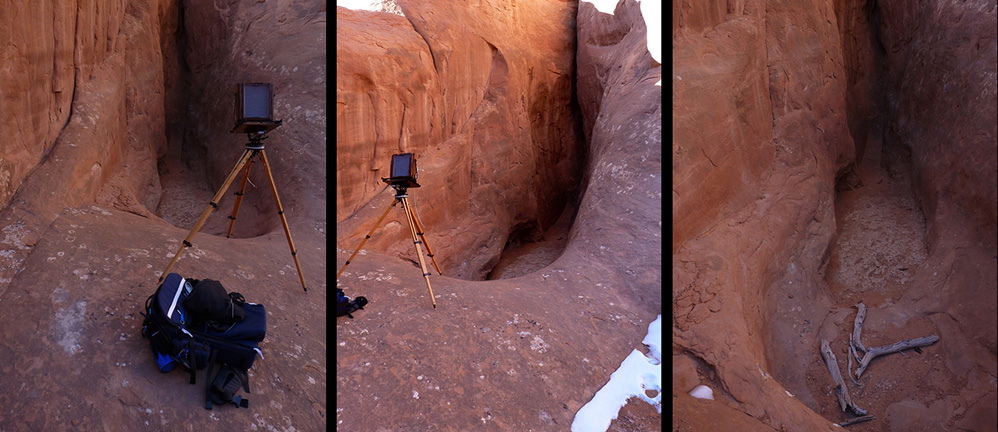
Next, the printing session; the negative printed quite easily, without any manipulation. It is quite interesting, but lacked depth and was somewhat depressed, especially at the bottom. Also the wood and cracked mud needed to be lighter to draw the eye and enhance the feeling of depth. Here is a side by side comparison of two prints, one before, the other after selective bleaching. . . (this is a quick snapshot of the wet prints on the viewing stand before toning)
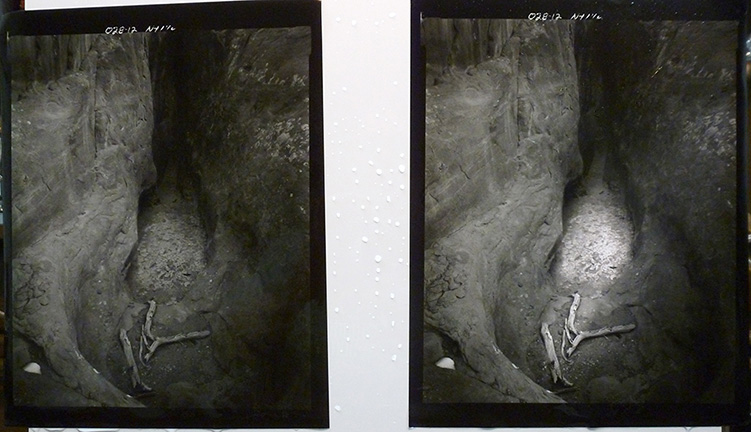
Finally, the finished print; we selenium tone every print we make, not only for permanence, but for the slight tonal shift and deepening of the contrast of the image. Here is the finished dry print. Note the change in color and contrast after selenium toning.
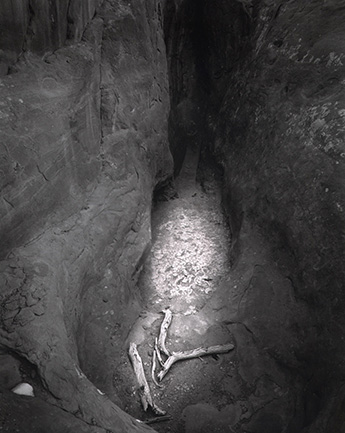
I will not get into the technique employed, since selective bleaching is deceptively simple and is beyond the scope of this short article to adequately explain. As I said before, be prepared to ruin a few prints. This is another tool you can add to your arsenal of darkroom techniques. . . remember, it is always about the finished print.
JB
ROLLING YOUR OWN FIXER
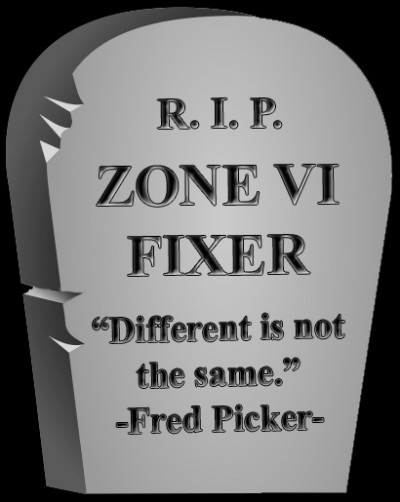 They say the more things change, the more they stay the same. Whatever that means. It seems like only yesterday I standardized my chemicals for printing and started using Zone VI Fixer. That was over twenty years ago. But you know, things do change, and they are not the same. We are down to our last box of the old standard Fred Picker Fixer and it is time to start rolling our own from bulk chemicals.
They say the more things change, the more they stay the same. Whatever that means. It seems like only yesterday I standardized my chemicals for printing and started using Zone VI Fixer. That was over twenty years ago. But you know, things do change, and they are not the same. We are down to our last box of the old standard Fred Picker Fixer and it is time to start rolling our own from bulk chemicals.
Actually, I started researching this over a year ago and we have obtained several hundred pounds of Sodium Thiosulfate in anticipation of this day. This is the principle chemical used in fixer and though not difficult to acquire, it is expensive to ship. Sodium Thiosulfate Pentahydrate is used in water treatment to remove chlorine. It is available from many pool supply sources. Also, check the Internet and eBay, there are sellers there that will ship to your door. You will need about two pounds per gallon of fixer. We go through anywhere from half a gallon to a gallon of fixer during a typical printing session, so we need a lot of the raw material. But, this is the price you pay when you work in the wet darkroom and we believe it is more than worth the effort.
The next question is what formula should I use. Since we are only talking about paper fixer, then there is no reason to even consider a formula suitable for film. We just need a good, dependable fixer for processing fiber base papers. Now we get into the discussion about acid vs. alkaline fixer. Boy, does that ever stir the pot. Almost like asking film or digital.
Well, I want to change as little as possible and using a running water stop bath instead of acetic acid is just not what I want to mess with. I did not want to change anything, or at least, I wanted to change as little as possible. So, it was immediately determined that an acid fixer was best for us. There are many formulas out there, and everyone has their favorite. I have tested several and settled on what we intend to use.
Also, we needed a formula for plain hypo for second fixing bath and pre-selenium toning. I found what I needed there also, thanks Ansel.
So, if you are interested in what we use, I have added our fixer choice to the Formulas Area of this BLOG. Drop by and take a look. The formulas we have chosen work fine, are simple, easy to mix, and does the job as needed. Obviously, I am not a chemist, and I am not into discussing chemical formulas. For me, working in the darkroom and mixing chemicals is only a matter of finding a recipe that reliably works, sticking with it, and getting on with making photographs. I don’t care much about the innards of chemistry. . . I’ll leave that to the chemists.
Things do change, and they are not the same, but who cares, as long as the results are the same. Fred Picker said, “different is not the same.” I miss ol’ Fred!
JB
THOMAS DUPLEX SUPER SAFELIGHT FILTERS
 Seems the last couple of times I have tested the darkroom safelight I have had to cut down the illumination. That should be a clue that the filters are fading and it is time to replace them. We use a Thomas Duplex Super Safelight that I rebuilt many years ago. Since we have a small darkroom I knew I needed to attenuate the light. My original safelight was modified when I rebuilt it and the 35 watt lamp was replaced with a 18 watt lamp. Note: You have to replace the ballast and start capacitor if you change the lamp wattage. Wasn’t that big a problem seeing how the original ballast was no good. I purchase the safelight many years ago not working for little to nothing.
Seems the last couple of times I have tested the darkroom safelight I have had to cut down the illumination. That should be a clue that the filters are fading and it is time to replace them. We use a Thomas Duplex Super Safelight that I rebuilt many years ago. Since we have a small darkroom I knew I needed to attenuate the light. My original safelight was modified when I rebuilt it and the 35 watt lamp was replaced with a 18 watt lamp. Note: You have to replace the ballast and start capacitor if you change the lamp wattage. Wasn’t that big a problem seeing how the original ballast was no good. I purchase the safelight many years ago not working for little to nothing.
So, now I needed to replace the filters. Since I am only interested in B&W, work that simplifies things for sure. All I need to find is the correct filter and then I can assemble my own replacement. I have plenty of scrap glass, and tape.
With a little research on the Internet I discovered that the hard part had already been done. Seems a Rosco #19 “Fire” filter has the necessary bandwidth to filter out the annoying green and blue spikes in the low pressure sodium lamp spectrum. And, seems that others had proven this the best way possible. . . they tested it in their own darkroom.
All I needed was to order some filter material. Rosco filters are the industry standard for stage and film production and readily available. That was way too easy. The thing that I was still toying with was how to adjust the light output. It finally came to me. Why not put the #19 filter in the body position and then add a Neutral Density filter to the vane? Yep, that would do it. So I ordered a sheet of Rosco #19 filter and a sheet of 0.30 ND.
We have a lot of scrap glass around. I cut new glass to fit the body and vanes using TruVue Conservation Grade UV glass. Thought it wouldn’t hurt to add even more filtration. I also found out why the factory uses tissue paper. Without it, the filter material does not look that great against the glass and I could see that if any moisture were to condense in there, it could be bad for the filter. I really didn’t want to use tissue paper and I had a roll of Gila frosted window film from another project. This stuff is a self-adhesive plastic material used to frost windows. It was exactly what I needed to put a smooth textured surface on the inside of the glass to keep the filter from sticking. It also works well to diffuse the light.
One of my favorite tapes is the aluminum HVAC ducting tape. It is lightproof, sticks and stays in place. Slit a few pieces of tape, peel the backing and it will hold the filter sandwich in place with ease.

